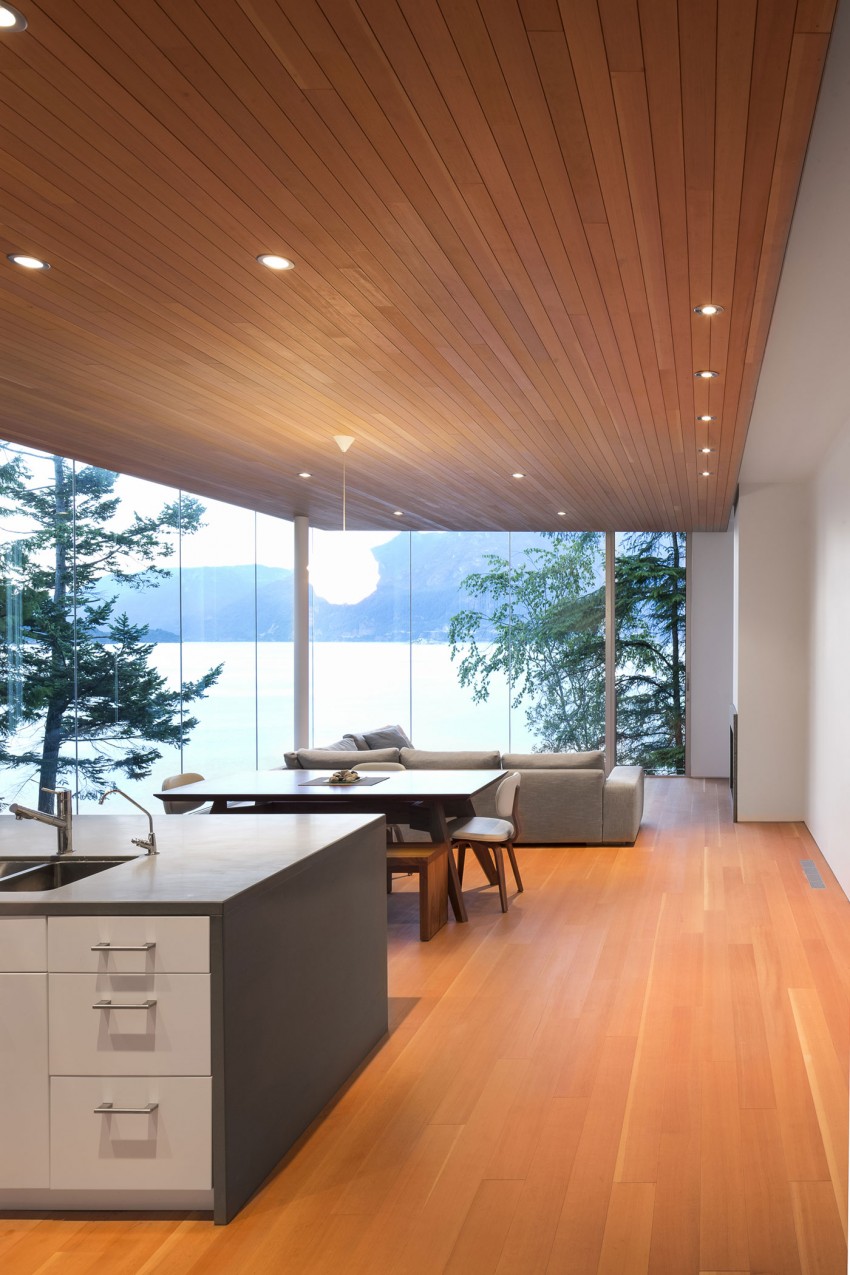Gambier Island House is a private residence designed by Mcfarlane Biggar Architects + Designers and is located on Gambier Island, near Vancouver, British Columbia, Canada.
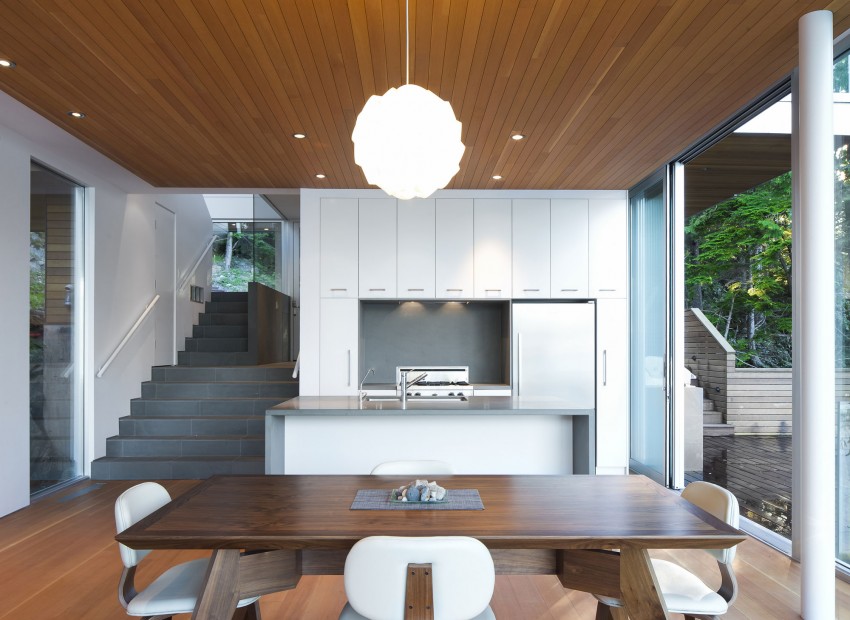
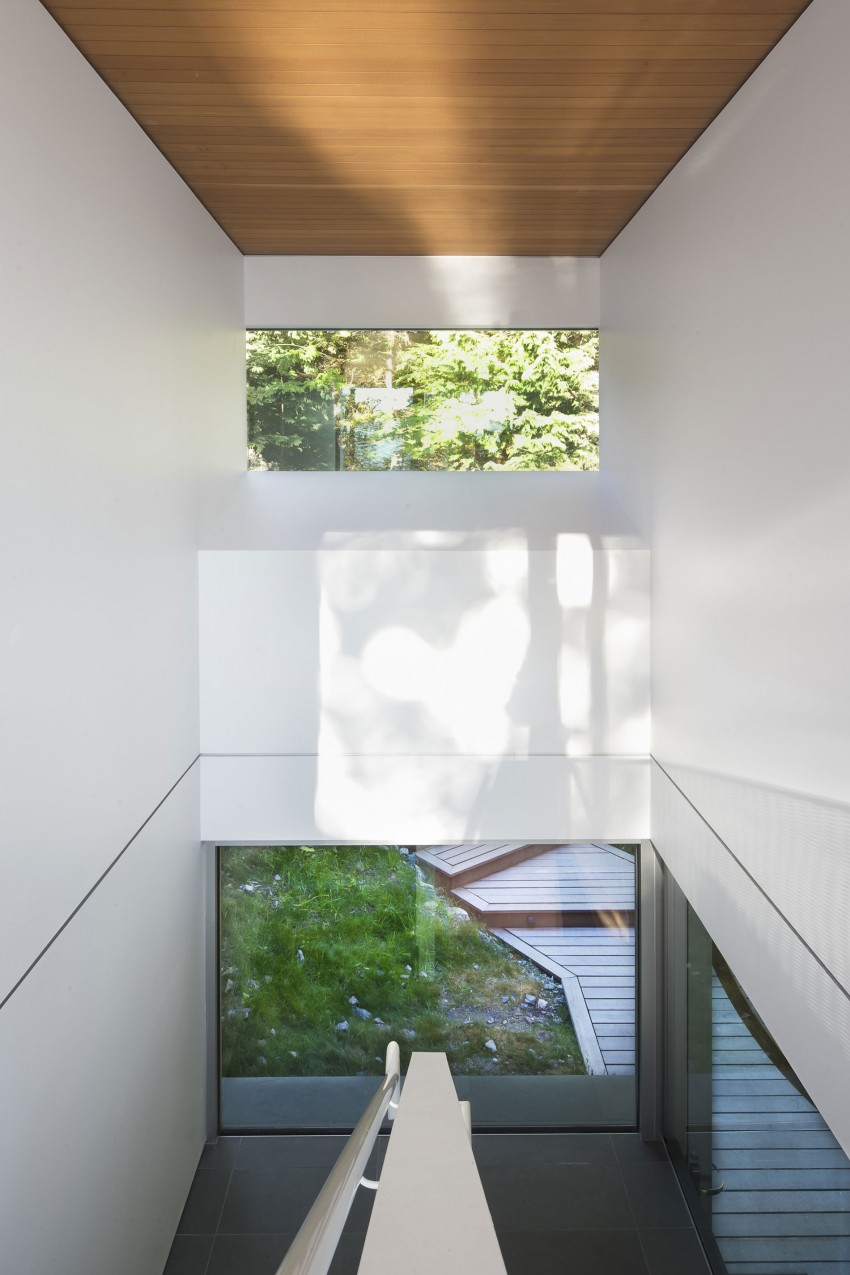
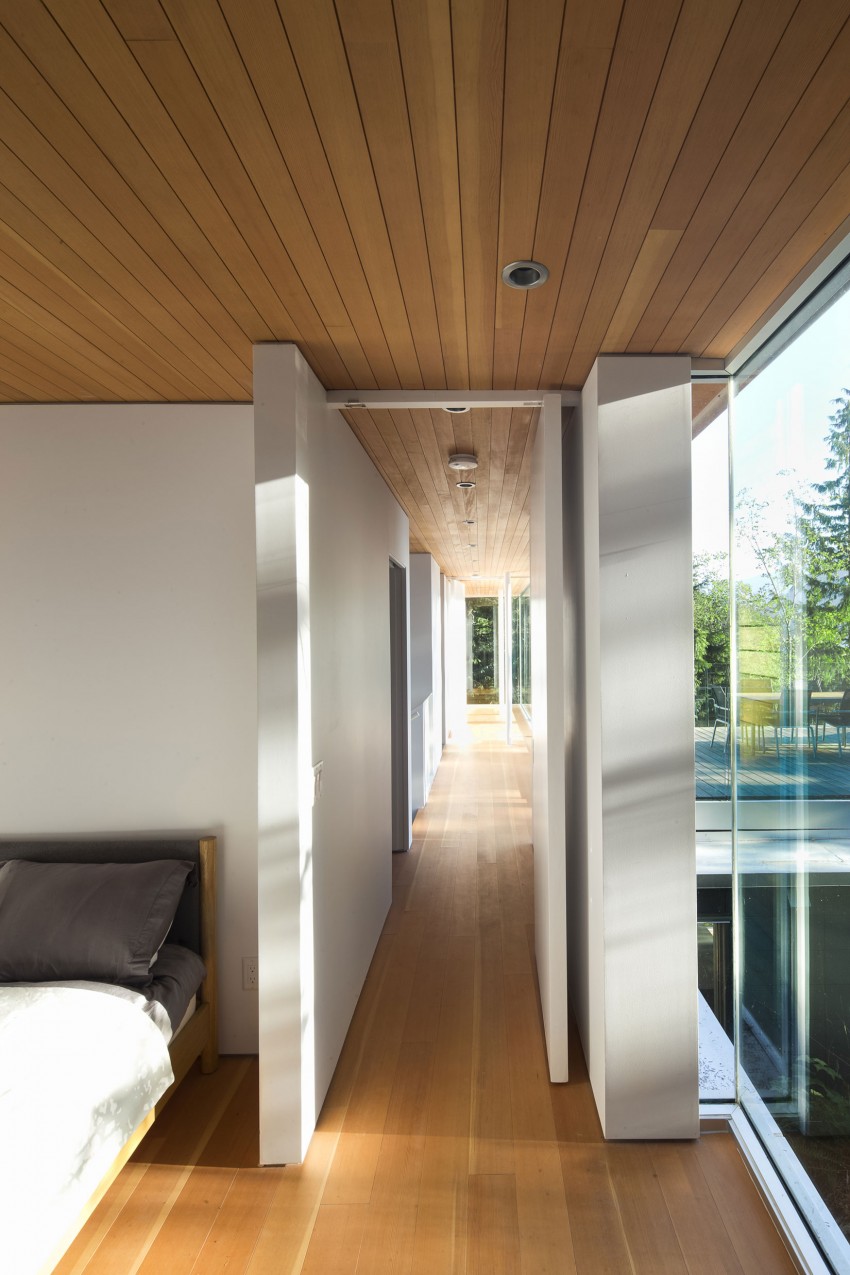
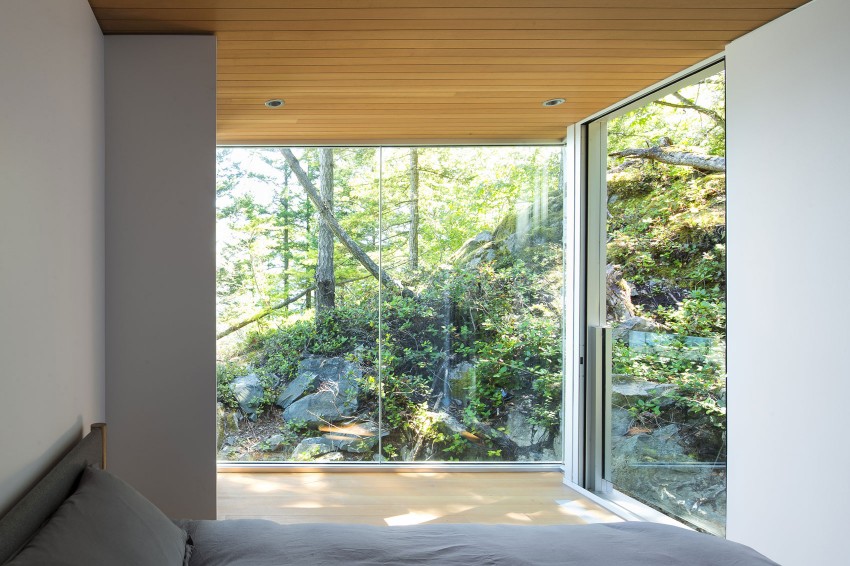
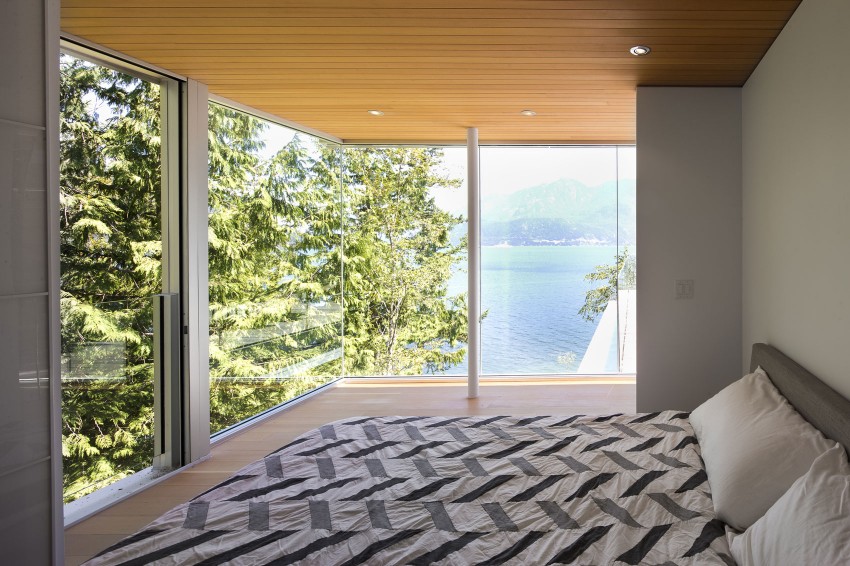
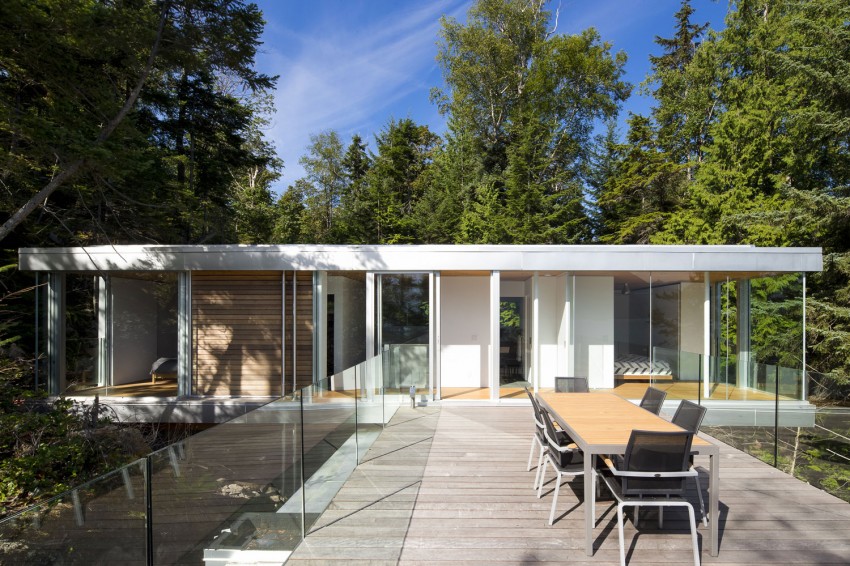
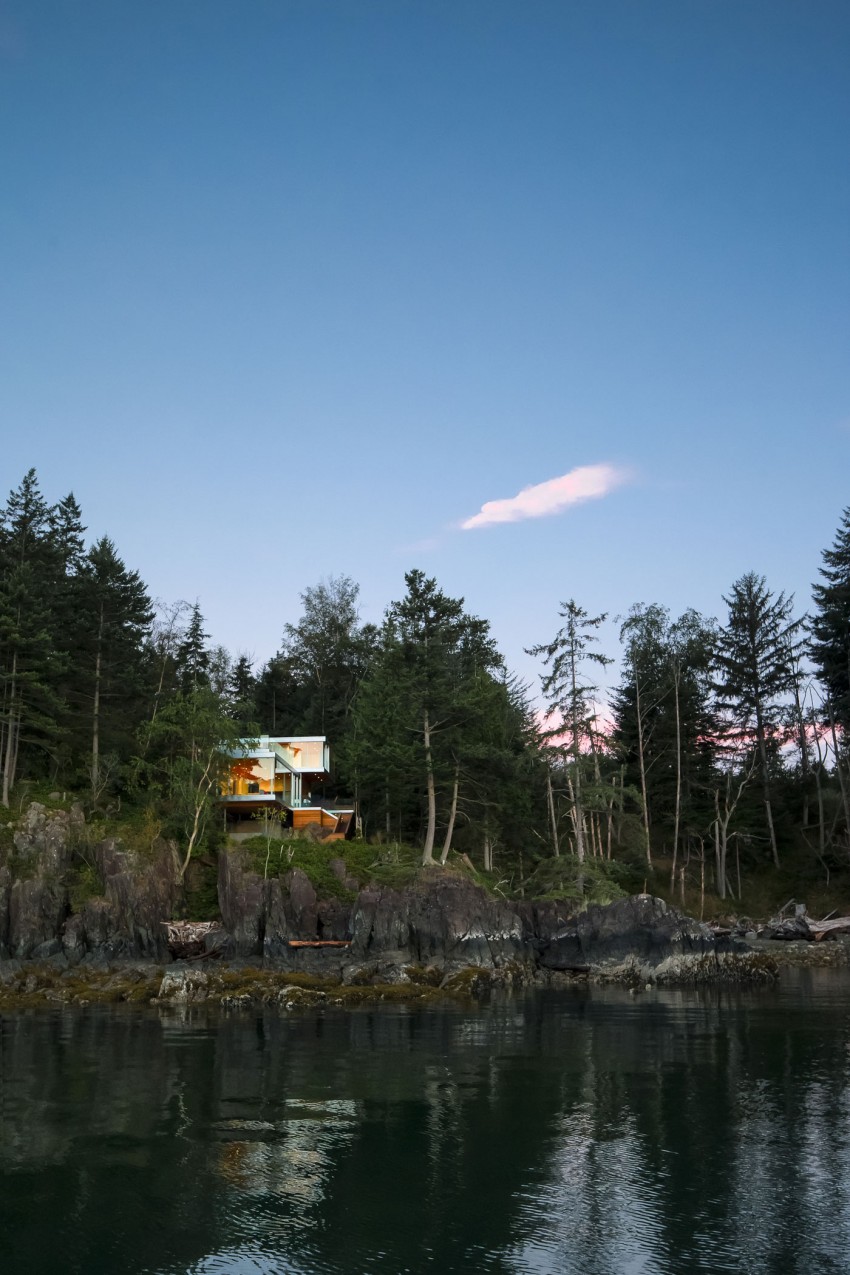
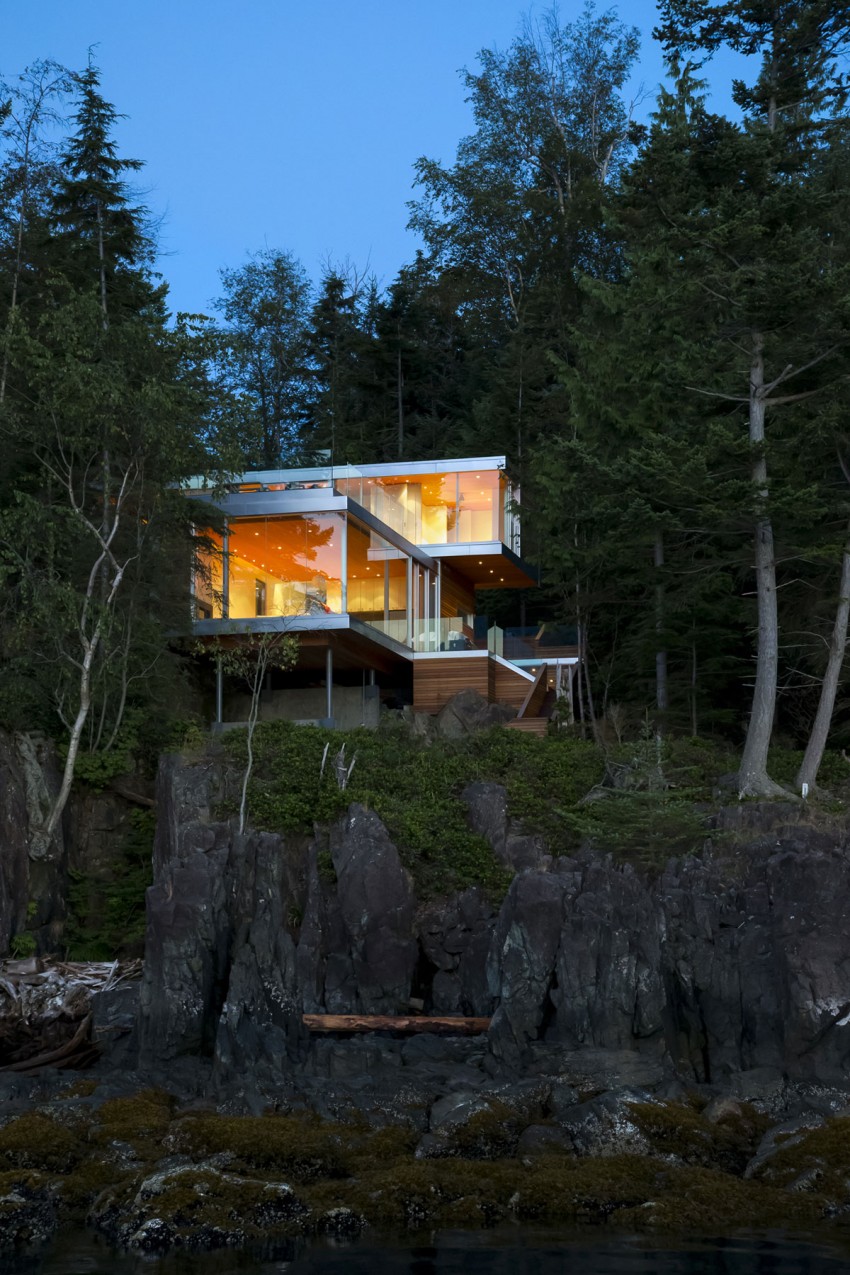
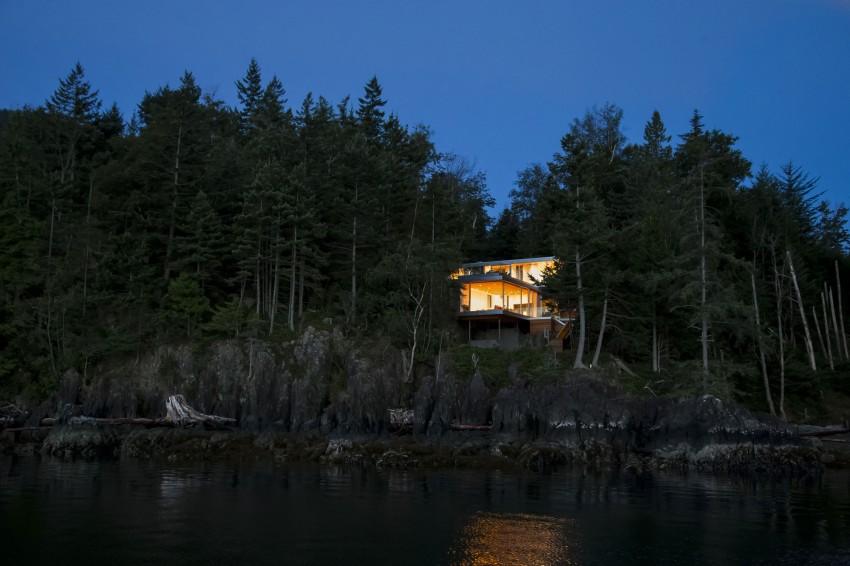
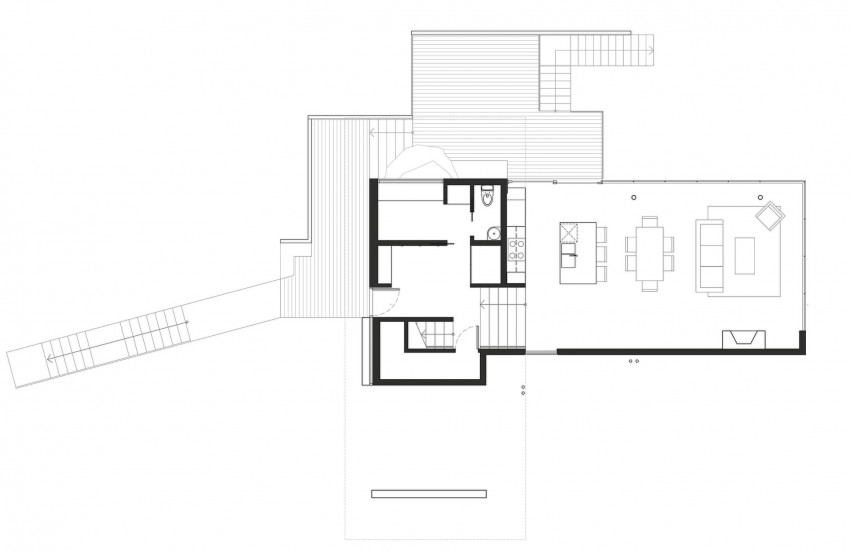
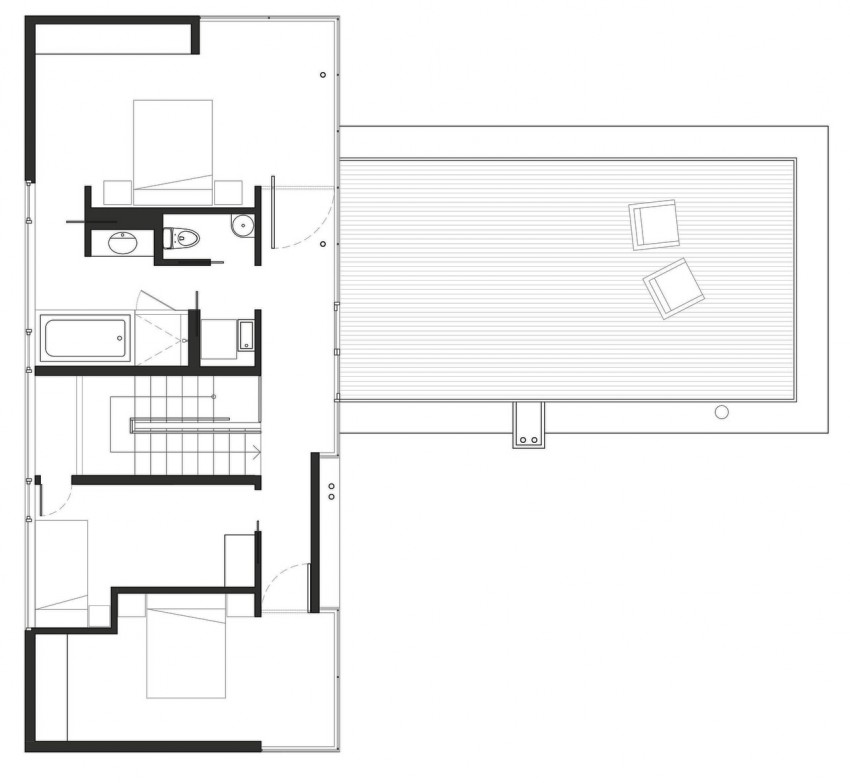
The Gambier Island House is a weekend retreat for a young Vancouver couple with two children. Located on the east side of Gambier Island, the steep and wooded waterfront site is only accessed by water and totally off the grid with independent sources for heat and electricity. In celebration of the rugged qualities of the site, the design is conceived as simple forms and modest materials touching the ground just lightly. Two stacked boxes are perched on the rocky cliff, clad in wood, cement board, and glass to fend off the elements. Three-bedrooms and two bathrooms are complemented by an open-plan kitchen, dining + living area with simple lines to frame the amazing views to sea and mountains beyond, while expansive roof decks create a seamless connection with the spectacular setting. The hybrid structure is principally wood with some steel and minimal concrete, reinforcing the design intent of minimal impact on the site.



